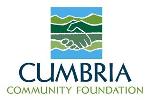The Last Farrier
By Caroline Hamilton
I am going to tell you a story about a yard full of horses and the farriers that passed through their stable doors.
full of horses and the farriers that passed through their stable doors.
The horses in this yard were varied. There were horses of all colours and markings. Bays, blacks, blue-roans, pie-, tri- and skew-bald, stars and startling white flashes on faces, various quantities of stockings and socks, scrubby tails and flowing manes, glistening short coats that need a coat themselves in the winter, thick, dense hair that never seemed clean after endless brushing.
There were thoroughbreds bred for speed and competition, warmbloods from the continent for their bounce in front of a fence or a vast open ditch, Arabs for their stamina, their ability for an endless trot on a never ending road. There were Shires and Clydesdales for strength, able to pull carriages, or in the days bygone by necessity and nowadays for fun at the country fairs, the plough. There were young-uns, and old-uns, as green as the spring flush of grass, as old, weathered and beaten as the barn doors. There were the skittish, and the steady, the compliant, and the cantankerous.
The first farrier who arrived was large, and loud, declaring the hot shoe as the best. All the tools needed were there, and every nail driven by the hammer would be done in two thuds, very quick. The heavy horses didn’t bat an eyelid, the warmbloods and the old-uns would bear it and suffer the elbow in the ribs if something went just amiss for this farrier. The thoroughbreds, the Arabs, and the young-uns deplored the arrival of this farrier, they tried their best to behave appropriately, but it wasn’t long before their eyes were darting around looking for solace, and they danced to be away as soon as possible, not realising that this only made them feel the experience in the dark light they saw it worse. Then the cantankerous arrived, and the farrier reflected their mood, and that time was unpleasant for everyone.
The second farrier arrived, and again had all the tools, and was meek and mild, and followed the lead given. Extra long studs in the shoe of the jumper, without looking over the stable door and considering the bedding depth. A racing plate for the thoroughbred, whose daily exercise walking on the tarmac roads, slipping and skidding, and all the time worrying when they’d next be on their knees. Hobbling for the skittish, a front leg tied to a back leg so that when they jumped, they’d pull their own legs from under them, and learn a lesson for the next time. Twitching for the cantankerous, basically a nut-cracker attached to the nose, in anticipation of a problem arising.
The last farrier arrived, again laden with all the tools, and with pockets heavily loaded with mints made the long walk around every stable door before starting. The last farrier watched the ears of all the horses, and their gait be it graceful or gawky, and their muscles be they taut and tightly bound, or trouble free, and the horses watched the last farrier, raising a leg and resting it down, waiting, wondering. The last farrier had arms strong enough to do as needed and hands that although thick skinned from the work, applied the gentlest of touch to a tired aching limb, a meaningful pull to the resistant, the right pressure to the young-uns and the skittish who sought and moved into the reassuring contact. The last farrier spoke differently to the Arabs with their heads head high and aloof, than to the old-uns who weren’t the best of hearing, than to the warmbloods and thoroughbreds who are known for their impatience.
When the last farrier packed away their tools and then walked away, I listened to hooves making the rhythmic and heat warming noise of a horse clip-clopping, and I thought to myself that this last farrier was the one that we would all want to meet again.






